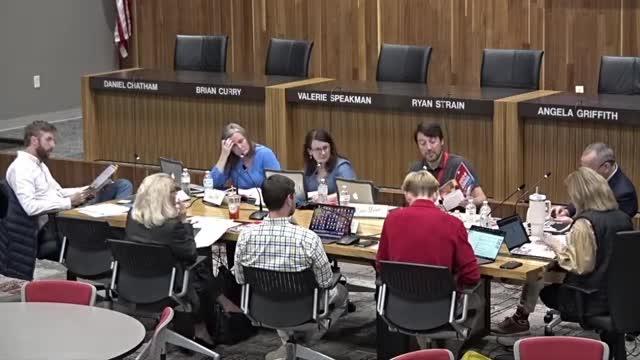Lawmakers clash over controversial school voucher legislation
November 12, 2024 | Germantown, School Districts, Tennessee
This article was created by AI summarizing key points discussed. AI makes mistakes, so for full details and context, please refer to the video of the full meeting. Please report any errors so we can fix them. Report an error »

In a recent government meeting, officials discussed the implications of a new voucher program for education, which has sparked significant debate among stakeholders. The proposed legislation, already filed in both the Senate and House, aims to allocate 20,000 scholarships for students to attend private schools, with an estimated fiscal impact of $144 million. However, concerns were raised regarding the potential loss of funding for public schools, particularly as the program could divert state dollars away from local education agencies (LEAs).
Participants highlighted a \"hold harmless\" provision in the bill, which would ensure that LEAs do not see a decrease in state funding due to student disenrollment in the first year. However, this provision does not account for the loss of local funding, which could exacerbate financial challenges for public schools. As one official noted, the funding model could lead to significant budget cuts or program reductions if student numbers decline.
The discussion also touched on the lack of income limits for the initial 10,000 scholarships, raising concerns about equity and access. The meeting underscored the need for flexibility in educational requirements, with officials expressing frustration over the burdensome mandates imposed on public schools compared to the autonomy granted to private institutions.
Critics of the voucher program voiced concerns that it could disproportionately benefit families already able to afford private education, potentially widening the gap between public and private schooling. The sentiment among some officials was that the current legislative approach fails to address the underlying issues within the public education system, instead opting to create a new framework that may not adequately support all students.
As the bill progresses, stakeholders are urged to remain vigilant and advocate for a balanced approach that prioritizes the needs of public education while considering the diverse options available to families. The outcome of this legislation could have lasting implications for the future of education funding and access in the region.
Participants highlighted a \"hold harmless\" provision in the bill, which would ensure that LEAs do not see a decrease in state funding due to student disenrollment in the first year. However, this provision does not account for the loss of local funding, which could exacerbate financial challenges for public schools. As one official noted, the funding model could lead to significant budget cuts or program reductions if student numbers decline.
The discussion also touched on the lack of income limits for the initial 10,000 scholarships, raising concerns about equity and access. The meeting underscored the need for flexibility in educational requirements, with officials expressing frustration over the burdensome mandates imposed on public schools compared to the autonomy granted to private institutions.
Critics of the voucher program voiced concerns that it could disproportionately benefit families already able to afford private education, potentially widening the gap between public and private schooling. The sentiment among some officials was that the current legislative approach fails to address the underlying issues within the public education system, instead opting to create a new framework that may not adequately support all students.
As the bill progresses, stakeholders are urged to remain vigilant and advocate for a balanced approach that prioritizes the needs of public education while considering the diverse options available to families. The outcome of this legislation could have lasting implications for the future of education funding and access in the region.
View full meeting
This article is based on a recent meeting—watch the full video and explore the complete transcript for deeper insights into the discussion.
View full meeting
